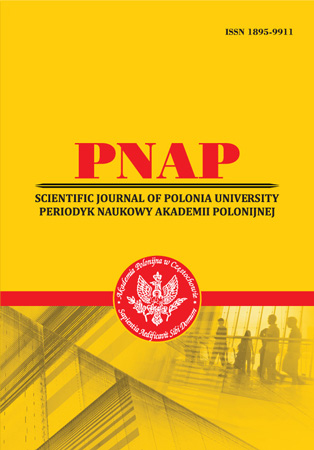PHYSICS AND METAPHYSICS OF FICTION REFLECTED IN FILM: A CASE OF DECRYPTION
Abstract
The article deals with religious, materialistic, and mixed interpretations of the thing and the personality as generic entities in the story «Oh, whistle, and I'll come to you, my lad» by M. R. James and its screen versions. The differences found in the versions concern petty and significant deviations from the original story, which influence the initial message. The method used to achieve the results represented in the article combines the ideas of Philosophical Hermeneutics and those of the medieval exegetical method of allegorese applied to deal with obscure passages in sacred texts. The original story treated within the Protestant ideological paradigm gives way to materialistic views that are subject to refutation, reconsideration, and combination with philosophical issues in the screen versions – transponents. The thing as an inanimate object is endowed with personal qualities of a living being; on the contrary, an individual is viewed as a thing with no mind.
References
A. (Director). (2010). Whistle and I'll come to you [Motion Picture]. United Kingdom: BBC.
2. Augustine (2009). On Christian doctrine. Mineola, NY: Dover Publications.
3. Burnes, R. (1994). The complete poems and sons of Robert Burns. Ware, England: Wordsworth Editions.
4. Bogost, I. (2012). Alien phenomenology. What it's like to be a thing. Minneapolis, MN: University of Minnesota Press.
5. Cannon, G.H., & Kaye, A.S. (2001). The Persian contributions to the English language: A historical dictionary. Wiesbaden: Harrassowitz Verlag.
6. Descartes, R. (2008). Meditations on first philosophy. With selections from the objections and replies. Oxford UP, 2008.
7. Englund, A. (2010). Intermedial topography and metaphorical interaction. In L. Ellerström (Ed.), Media borders, multimodality and intermedialty (pp. 69-81). New York, NY: Palgrave Macmillan.
8. Forbes, R.J. (1971). Studies in ancient technology. Leiden, the Netherlands: Brill.
9. Gadamer, H.-G. (2008). Philosophical hermeneutics. Los Angeles, CA: University of California Press.
10. Hardon, J. (1981). The catholic catechism: A contemporary catechism of the teachings of the Catholic church, Doubleday.
11. Harman, G. (2002). Tool-Being. Heidegger and the metaphysics of objects. Chicago, IL: Open Court Publishing.
12. Hutcheon, L., & O'Flynn, S. (2006). A theory of adaptation. New York, NY: Routledge.
13. Ihina, Z. (2018). Intermediality and polymorphism of narratives in the Gothic tradition. Lege Artis, 3/1, 80-123. DOI: 10.2478/lart-2018-0003 ISSN 2453-8035
14. Irudayaraj, D.S. (2017). Violence, otherness and identity in Isaiah 63:1-6. The Trampling One Coming from Edom. New York, NY: T&T Clark.
15. James, M.R. (2015). Oh, whistle, and I'll come to you, my lad. In D. Jones (Ed.), Collected ghost stories of M. R. James (pp.76-94). Oxford, England: OUP.
16. Jones, D. (2015). Explanatory Notes. In D. Jones (Ed.), Collected ghost stories of M.R. James (pp.421-468). Oxford, England: OUP.
17. NKJV (The New King James Version of the Holy Bible). (1982). Nashville, TN: Thomas Nelson.
18. Klein, E. (1966). A Comprehensive etymological dictionary of the English language (Volumes I, II). Amsterdam, Netherlands: Elsevier.
19. Kosanke, C.G., & Manhardt, L.W. (2011). Come and see. Catholic Bible study. Isaiah. Steubenville, OH: Emmaus Road Publishing.
20. Lotz-Heumann, U. (2007). The Natural and Supernatural. In U. Lotz-Heumann (Ed.), The Oxford Handbook of the Protestant Reformations (pp. 688-708). Oxford, England.
21. Miller, J. (Producer/Screenwriter/Director). (1968). Whistle and I'll come to you [Motion Picture]. United Kingdom: BBC.
22. NHPB (The New Hendrickson parallel Bible). (2012). Peabody, MA: Hendrickson Publishers.
23. Pernoud, R. (2009). The Templars. Knights of Christ. San Francisco, CA: Ignatus Press.
24. Quinn, M. (1994). The swastika. Constructing the symbol. Routledge.
25. Reuling, H. (2006). After Eden. Leiden, the Netherlands: Brill.
26. Ryan, M.-L. (2014). Story/worlds/media: Tuning the instruments of a media-conscious narratology. In M. L. Ryan & J.-N. Thon (Eds.), Storyworlds across media. Toward a media-conscious narratology (pp. 25-50). Lincoln, NE: University of Nebraska Press.
27. Ryle, G. (2009). The concept of mind. London, England: Routledge.
28. Siefring, J. (2004). Oxford dictionary of idioms. Oxford, England: OUP.
29. Seow, C.L. (2003). Daniel. Louisville, KY: Westminster John Knox Press.
30. Strauch, E.H. (2001). Beyond literary theory: Literature as a search for meaning of human destiny. Lanham, MD: University Press of America, 2001.
31. Steingass, F.J. (2005). A Comprehensive Persian-English Dictionary. New Delhi, India: Asian Educational Services.
32. Thiselton, A.C. (1992). New horizons in Hermeneutics. Grand Rapids, MI: Zondervan Publishing House.
33. Verstraten, P. (2009). Film narratology. Toronto, Canada: University of Toronto Press.
34. Walsham, A. (1999). Providence in early modern England. Oxford, England: OUP.
35. Weinryb, I. (2016). The bronze object in the Middle Ages. Cambridge, England: CUP.
36. Werness, H.B. (2006). Continuum Encyclopedia of animal symbolism in world art. New York, NY: Continuum.
37. Wolf, W. (2002). Intermediality revisited. Reflections on word and music relations in the context of a general typology of intermediality. In W. Bernhart, S. Aspden & M. Lodato (Eds.), Word and music studies. Essays in honor of S. P. Scher (pp. 13-35). Amsterdam, Netherlands: Rodopi.
Abstract views: 232 PDF Downloads: 189







